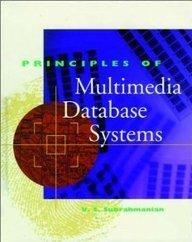Answered step by step
Verified Expert Solution
Question
1 Approved Answer
Hands on Assignment # 1 Please upload your answers as a Word document or a PDF document. Clearly label your answers and the graphs. Your
Hands on Assignment #
Please upload your answers as a Word document or a PDF document.
Clearly label your answers and the graphs.
Your full answer for each part should be contained in the submitted document. Do not
reference the spreadsheet. The answers such as "see spreadsheet" will not be accepted.
Keep your Excel spreadsheet with all your work for your records. I may ask you to submit
your Excel spreadsheet separately. Be sure your work there is organized and easy to
follow.
The ATM Transactions Excel Workbook contains a data set of Credit union transactions for
days at a driveup ATM and two walkup ATMs oncampus in student union buildings at two
different university campuses. Create a comprehensive data analysis report that addresses the
following questions. Please make sure that all of your visualizations have proper labels, titles, axis
titles, and that they follow general guidelines of creating good data visualization.
Describe the data, including how many total observations there are.
What do you think the field time means? How would you interpret it Create a visual
some sort of graph with the variable time to test your hypothesis.
Include tables that count the number of observations by:
a Weekday
b Location
c Type of transaction
There should be three separate tables summarizing your data.
Create a pie chart to illustrate the relative number of transfers at each location.
Create a pie chart to illustrate the relative total transfer amount at each location.
Discuss the differences in the two pie charts. What do they tell you?
Create a column chart to illustrate the total number of deposits for the month at each
location.
Create a column chart to illustrate the total amount of deposits for the month at each
location.
This data contains days of transactions, with the date variable indicating the date of
the transaction. Create a chart for the time series of the total number of deposits by date.
Create a chart for the time series of the total deposit amount by date.
Create a chart that illustrates the time series of the total amount of withdrawals by date
for each location. There should be lines on this chart, since there are ATM locations.
Go on to the next page
For # consider only Withdrawal transactions.
Create a histogram for the amount withdrawn.
What is the average amount withdrawn?
What is the median amount withdrawn?
What is the standard deviation of the amount withdrawn?
Create the fivenumber summary and draw the box and whiskers plot for the amount
withdrawn.
Describe the distribution and general shape of the amount withdrawn. Does the
distribution look normal? Why or why not?
Are there any outliers? How many? List or describe outliers, if any. Be sure to use the
IQR rule for outliers
From this data, create a contingency table for withdrawals under $ $over $ in
one dimension, and location on the other.
What is the probability that a withdrawal is $
If a withdrawal is over $ what is the probability that it originated in the driveup
location?
What is the probability that a withdrawal is greater than $ if it is from Campus A
Are location and size of withdrawal independent events? Be sure to use
the rule for independent events to support your reasoning. Simply saying Yes or No
will not earn you any points.
Go on to the next page
For # consider only Transfer transactions.
Create a histogram for the amount transferred.
What is the average amount transferred?
What is the median amount transferred?
What is the standard deviation of the amount transferred?
Compare the standard deviations of transfers and withdrawals, and talk about the
differences in the distributions.
Create the fivenumber summary and draw the box and whiskers plot for the amount
transferred.
Describe the distribution and general shape of the amount transferred. Does the
distribution look normal? Why or why not?
Are there any outliers? How many? List or describe outliers, if any. Be sure to use the
IQR rule for outliers
From this data, create a contingency table for transfers $under $ in one
dimension and location on the other.
What is the probability that a transfer is $ie what proportion of all transfers is
$ or over?
If a transfer is under $ what is the probability that it originated in the driveup
location?
What is the probability that a transfer is $ or over if it is from Campus B
Are location and size of transfer over or equal tounder $ independent events? Be
sure to use the rule for independent events to support your reasoning. Simply saying Yes
or No will not earn you any points.
Step by Step Solution
There are 3 Steps involved in it
Step: 1

Get Instant Access to Expert-Tailored Solutions
See step-by-step solutions with expert insights and AI powered tools for academic success
Step: 2

Step: 3

Ace Your Homework with AI
Get the answers you need in no time with our AI-driven, step-by-step assistance
Get Started


